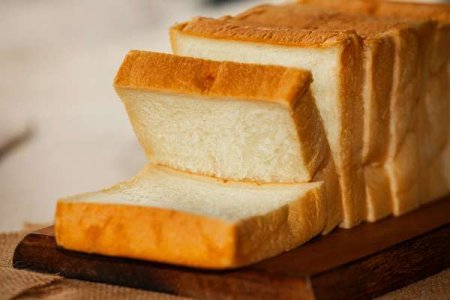Supermarket bread labels decoded—how to tell what’s truly fresh
- Replies 0
Ah, the simple pleasure of a fresh loaf of bread—there's nothing quite like it.
The softness, the aroma, the taste—it's a sensory experience that can transport us back to our grandmother's kitchen or a quaint café in Paris.
But in the hustle and bustle of our daily lives, we often rely on the convenience of supermarket bread.
The question is, how can we ensure that the loaf we pick off the shelf is truly fresh?
You may have heard the old wives' tale about bread tags.
Rumor had it that the color of the tag indicated the day the bread was baked, with a different hue for each day of the week.
It was a code believed to be used by store employees to manage inventory and ensure only the freshest loaves graced the shelves.

The supposed schedule was as follows:
- Monday: Blue
- Tuesday: Green
- Thursday: Red
- Friday: White
- Saturday: Yellow
But wait—what about Wednesday and Sunday?
The theory suggested that bakeries took those days off, which seems unlikely for large-scale operations that need to meet constant consumer demand.
Also read: Revive your stale bread instantly with this astonishing trick–You won’t believe how simple it is!
So, is there any truth to this color-coded system?
It turns out that while this method was indeed used in the past, it's not a reliable indicator of freshness today.
In fact, many brands have abandoned the color tags altogether or use a single color for all their products.
When it comes to determining the freshness of supermarket bread, it's time to put the color code myth to bed and focus on more reliable methods. Here's what you need to know:
1. Check the Dates
Modern bread tags often feature printed best-by or sell-by dates. These are your first clues to freshness.
A best-by date indicates peak flavor and quality, while a sell-by date is used for inventory management. Neither is a safety date, but they can guide you to the freshest option on the shelf.
Also read: ALDI vs. Trader Joe's: Who reigns supreme in the fresh produce showdown?
2. Use Your Senses
If the date isn't enough to convince you, or if there's no date at all, it's time to engage your senses.
Give the loaf a gentle squeeze—it should be soft and spring back, not crumble under pressure. Take a whiff; the bread should have a pleasant, yeasty smell.
Finally, inspect the bag for excessive crumbs, which can indicate the bread is past its prime.
3. Inspect the Package
A loaf that's been squished or smashed can lose its desirable texture. Look for bread that's been handled with care and has maintained its shape.
 Have you ever used the color code system to pick your bread? Do you have any other tips for ensuring freshness? Join the conversation and share your thoughts in the comments below. Let's break bread and share our stories of culinary discovery!
Have you ever used the color code system to pick your bread? Do you have any other tips for ensuring freshness? Join the conversation and share your thoughts in the comments below. Let's break bread and share our stories of culinary discovery!
Read more: Unleash the secret of dining out: Discover the 11 restaurants where free bread steals the show!
The softness, the aroma, the taste—it's a sensory experience that can transport us back to our grandmother's kitchen or a quaint café in Paris.
But in the hustle and bustle of our daily lives, we often rely on the convenience of supermarket bread.
The question is, how can we ensure that the loaf we pick off the shelf is truly fresh?
You may have heard the old wives' tale about bread tags.
Rumor had it that the color of the tag indicated the day the bread was baked, with a different hue for each day of the week.
It was a code believed to be used by store employees to manage inventory and ensure only the freshest loaves graced the shelves.

Supermarket bread labels decoded—how to tell what’s truly fresh Image source: Charles Chen / Unsplash
The supposed schedule was as follows:
- Monday: Blue
- Tuesday: Green
- Thursday: Red
- Friday: White
- Saturday: Yellow
But wait—what about Wednesday and Sunday?
The theory suggested that bakeries took those days off, which seems unlikely for large-scale operations that need to meet constant consumer demand.
Also read: Revive your stale bread instantly with this astonishing trick–You won’t believe how simple it is!
So, is there any truth to this color-coded system?
It turns out that while this method was indeed used in the past, it's not a reliable indicator of freshness today.
In fact, many brands have abandoned the color tags altogether or use a single color for all their products.
When it comes to determining the freshness of supermarket bread, it's time to put the color code myth to bed and focus on more reliable methods. Here's what you need to know:
1. Check the Dates
Modern bread tags often feature printed best-by or sell-by dates. These are your first clues to freshness.
A best-by date indicates peak flavor and quality, while a sell-by date is used for inventory management. Neither is a safety date, but they can guide you to the freshest option on the shelf.
Also read: ALDI vs. Trader Joe's: Who reigns supreme in the fresh produce showdown?
2. Use Your Senses
If the date isn't enough to convince you, or if there's no date at all, it's time to engage your senses.
Give the loaf a gentle squeeze—it should be soft and spring back, not crumble under pressure. Take a whiff; the bread should have a pleasant, yeasty smell.
Finally, inspect the bag for excessive crumbs, which can indicate the bread is past its prime.
3. Inspect the Package
A loaf that's been squished or smashed can lose its desirable texture. Look for bread that's been handled with care and has maintained its shape.
Key Takeaways
- Color-coded bread tags once indicated the day bread was baked, but this system is no longer universally used.
- Most bread tags now feature printed sell-by or best-by dates, providing a clearer indicator of freshness.
- Fresh bread can be identified through a gentle squeeze, a yeasty smell, and minimal crumbs in the bag.
- For the freshest loaf, consumers should look beyond the tag color and check for the printed dates and use sensory clues.
Read more: Unleash the secret of dining out: Discover the 11 restaurants where free bread steals the show!






